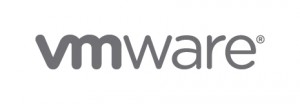It’s no secret that the demands on government IT are growing. Citizens want more from digital services. Agencies adopt new technologies to keep pace and deliver those services, but then new systems create new demands of their own. They create more data; require more compute, networking and storage resources; and they add to the complexity of government networks.
As result, agencies end up spending a lot of time, money and IT expertise trying to manage disparate technologies. That’s not sustainable.
To grapple with this growing sprawl of resource-intensive systems, agencies have turned away from traditional IT models to embrace software-defined data centers. A software-defined data center (SDDC) is a data storage facility in which all infrastructure elements – networking, storage, CPU and security – are virtualized and delivered as a service.
SDDCs address many of the challenges associated with traditional IT management. Because resources are virtualized, they can be pooled together and allocated based on need. That’s a stark contrast from traditional setups where each system was provisioned an array of networking, storage and compute resources that might not be required to maintain performance.
Because resources are delivered as a service, they can be efficiently allocated across the enterprise without wasting money or performance on low-use systems. Plus, a fully virtualized data center is automated and managed by intelligent, policy-based management software, which vastly simplifies governance and operations.
As agencies adopt a software-defined data center model, they often also consider moving to public cloud as a way to further increase the flexibility and agility of their IT systems. But here, other challenges often arise. When an organization pursues cloud environments that don’t match their on-premise investments – specifically their on-prem SDDC – they run into a few hurdles.
They can’t leverage their existing IT skillsets and tools to operate these new solutions, nor can they use established on-premise governance, security and operational policies. More importantly, they lose the flexibility benefits that cloud promises.
When cloud and on-premise environments don’t integrate seamlessly, IT professionals can’t strategically determine where to run applications due to lack of application portability and compatibility. That reduces agility while increasing costs.
To make the most of data center investments while also reaping the rewards of cloud, agencies must consider compatible solutions such as VMware’s SDDC on Amazon Web Services (AWS).
VMware Cloud on AWS enables enterprise IT and operations teams to continue to add value to their business in the AWS cloud, while maximizing their VMware investments, without the need to buy new hardware. This offering enables agencies to quickly and confidently scale up or down capacity, without change or friction, for any workload with access to native cloud services.
To learn more about this setup and why it makes sense for government agencies, watch our recent self-paced course, Moving Software-Defined Data Centers to the Cloud.







Leave a Reply
You must be logged in to post a comment.